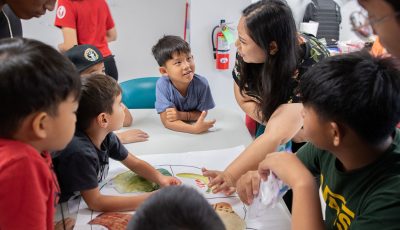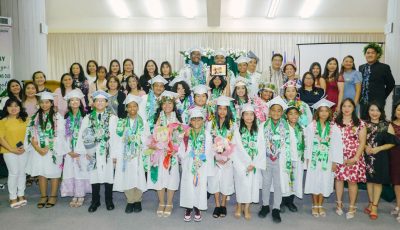‘14,500 to 17,500 humans are trafficked to US’
The third largest criminal activity in the world, human trafficking, result in an estimated 14,500 to 17,500 people who are trafficked into the United States each year. Most of them are women and children.
These numbers, grim as they may be, were taken from the national slavery and human trafficking prevention proclamation yesterday.
In talking about the subject yesterday, even Gov. Ralph DLG Torres acknowledged that human trafficking occurs here and in the United States.
“It does happen here,” said Torres.
“I want to raise awareness n our community that behavior such as [human trafficking and slavery] by perpetrators, employers, or whatnot, is not to be tolerated. [We must become one] as a community and report it. If anyone comes to you and issues their concern, I want all the organizations to take their time and help that individual because if we do not help each other then we are accepting this kind of behavior in the community, and that is not acceptable,” said Torres.
To stress this point, Torres declared January as National Slavery and Human Trafficking Prevention Awareness Month.
Alica Limtiaco, U.S. Attorney for the Districts of Guam and the CNMI, said law enforcement agencies such as the Department of Fire and Emergency Medical Services, the Division of Youth Services, or the Department of Public Safety need all the help they can get to track down and pinpoint human traffickers .
“One of the primary reasons we have this kind of public events and public outreaches is to make the public understand that law enforcement cannot do this job alone. It takes the [efforts of] the entire community,” said Limtiaco.
“When we see a red flag that causes you to be concerned, we ask that people call in and report to law enforcement and nonprofit service providers,” she added.
According to the proclamation, the U.S. is considered one of the top destinations for victims of child trafficking and exploitation, with cases of human trafficking reported in all 50 states and territories.
According to the proclamation, anyone can be trafficked, regardless of race, class, education, gender, age, or citizenship, when forcefully coerced or enticed by false promises.
Human traffickers earn billions of dollars by forcing millions of people to perform sex acts or provide labor or services against their will in exchange for empty promises. Traffickers utilize violence, threats, deception, debt bondage, and other tactics to keep victims from escaping.
The U.S. Department of Labor has identified 139 goods from 75 countries made by forced and child labor.
In 2015, one of five endangered runaways that were reported to the National Center for Missing and Exploited Children were likely sex trafficking victims.
The NMI Human Trafficking Intervention Coalition continues to work with federal, local, governmental, and nongovernmental organizations and consulates to raise awareness, engage in public education, provide outreach, and investigate violators.
The NMI HTIC is part of a larger group called the Pacific Regional Response to Combat Human Trafficking, which also includes the U.S. Attorney’s Office, federal and local partners, and the Guam Human Trafficking Task Force to bring together the participation, coordination, and collaboration of various organizations to prevent human trafficking.
For additional info or to report suspected human trafficking, contact Karidat, DPS, or DFEMS at 234-6981, 433-9222.



























